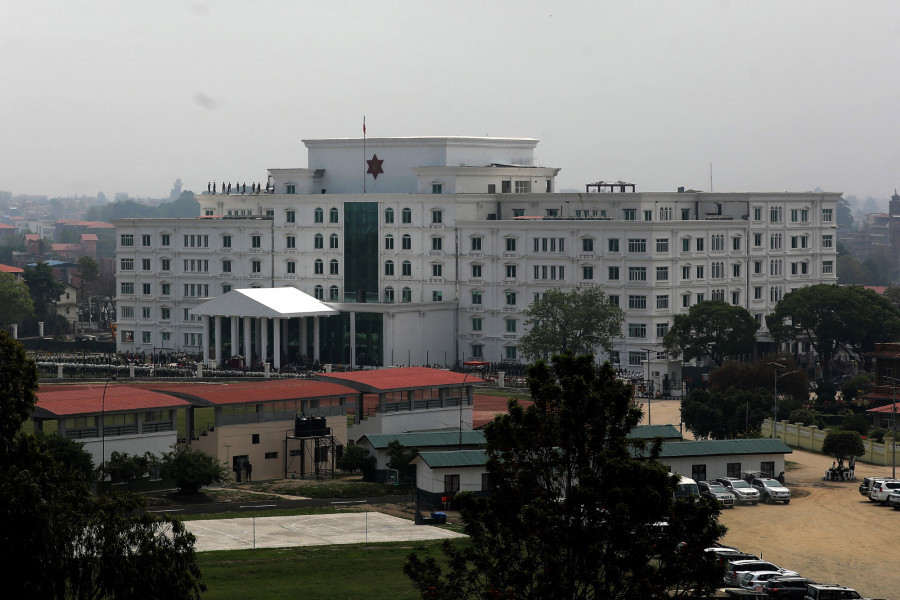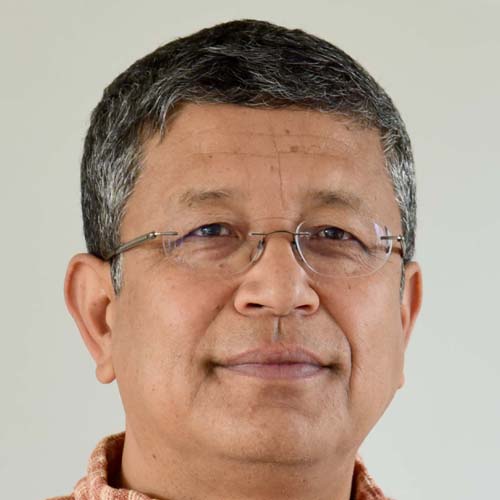Columns
Armed and unrestrained
Having wrangled concessions from a pliant civilian leadership to venture into business, the army’s professionalism cannot but be compromised.
Deepak Thapa
Anyone even remotely interested in an area of study known as civil-military relations is almost certain to begin by paying intellectual homage to two classic texts from more than half a century ago: Samuel P Huntington’s The Soldier and the State: The Theory and Politics of Civil-Military Relations (1957) and Morris Janowitz’s The Professional Soldier: A Social and Political Portrait (1964). These books discuss the place of the military in modern society in general but only by way of dwelling at length on the situation prevailing in the United States. The two authors have different approaches but are quite certain that as far as civilian control over the armed forces go, there is little to fret over the possibility of the American soldier someday making a grab for political power. Of course, that can perhaps partly be attributed to the cosy relationship the US military has developed over time with defence contractors—characterised as the ‘military-industrial complex’ by one of their own, Dwight D Eisenhower, five-star general and the 34th US president. All in all, though, the American model was vaunted as worth emulating and the US invited people from all over to take courses on how the delicate relationship between the military and its civilian overlords has been managed to perfection.
Not so it seems, as a recent article in Foreign Affairs claims. Entitled ‘Crisis of Command’, the article by a trio of writers with strong ties to the US military makes for fascinating reading. While for those who have kept up with the news coming out of the US over time, the manner in which the authors connect the dots is compelling. There are also nuggets like how the military has used Hollywood to paint a highly positive picture of life in the services by controlling access to the hardware needed for movie shoots in return for having the final say on the script. It is their conclusion that is unexpectedly hard-hitting: ‘If Americans do not recognise the rot lurking beneath their idyllic vision of civilian control, the United States’ civil-military crisis will only get worse.’
What is unsettling is how things appeared to unspool in the US with all its checks and balances. One can only imagine how bad it could potentially get here where the line between politics and military power has never been as clearly demarcated. Any examination of the role of the Nepali Army in public life can omit the period prior to 1990 since the ground rules for civilian oversight had not been laid out then. But it helps to briefly recap its role in our modern history till that time: loyalty switched overnight from the Ranas to the Shahs; the direct role played in curtailing the brief democratic experiment of 1959-60; and reluctant acceptance of king Birendra’s capitulation to ‘people power’ in 1990.
It was in the last instance that the army leadership tried to assert itself, and set the tone for the army’s place in post-1990 Nepal. That came by way of the infamous incident where the then army chief, Satchit Shumsher Rana, paraded a roomful of generals in a blatant attempt to intimidate the Interim Prime Minister, Krishna Prasad Bhattarai. Rana and his top brass were reacting to the proposal in the constitution being drafted that the army be brought under complete civilian control since they were not too keen on severing their umbilical link with the monarchy. They succeeded partly as the king was retained as the Supreme Commander of the army and given the authority to mobilise it on the recommendation of the three-member National Defence Council. The Council included the army chief, giving the latter a say in how the army could be used, a strict no-no in armies under the effective control of the political executive.
With such a start, it was only to be expected that the army functioned somewhat extraneous to the Nepali government. The paramount influence of the palace’s military secretariat continued as in the old days and the politicians were only too happy to leave matters as they were since it was a battle not worth fighting—at least not at the time. Then came the tongue-lashing in 2001 by another army chief of then Prime Minister Girija Prasad Koirala. Facing flak for not taking on the Maoists in the fluid political atmosphere after the palace massacre, Prajjwal Shumsher Rana was reported to have blamed the politicians for the mess the country was in. ‘Was this situation brought by the Army or bad governance?’ he asked.
The new king, Gyanendra, was only too willing to side with the general; Koirala resigned in protest. The wily politician did have the last say though when four years later, he propelled the process that purged all vestiges of the royal name from the army after the 2006 people’s movement. To its credit, the army, even after having backed Gyanendra’s coup in 2005, chose to mostly abstain from suppressing the popular insurrection.
The king may have been removed from the equation vis-à-vis the army thereafter but the initial post-2006 years hardly proceeded smoothly. The chief who took over, Rookmangad Katwal, was known for his outspoken antagonism towards the Maoists which only worsened after the former rebels came to power in 2008. Repeated snubs were there for all to see, including the new Maoist defence minister prevented from entering an army compound; the summary refusal to the Maoist finance minister’s order to open the road that cut across the army headquarters to the public once again, and the challenge to the government’s prerogative not to recommend some army generals for an extended tenure.
Katwal’s sacking and subsequent reinstatement is, of course, well known since it also marked, albeit for different reasons, the beginning of the slide for the Maoists from which they are still struggling to recover. There are those who view Katwal as having stood up to the Maoists and any nefarious plans they might have had. But that does not detract from the fact that he was solely responsible for undercutting civilian authority over the military in a New Nepal, and for which he was egged on actively by Nepali Congress, the UML, and India.
The UML (i.e., KP Oli)-army-India nexus deserves a separate treatment in itself. For now, suffice it to point out that it has had the unfortunate result of the army deviating from its core competency. Oli appears to believe that he can secure loyalty by doling out contracts to an army more than willing to take on such business responsibilities. Having wrangled concessions from a pliant civilian leadership in delving into ventures such as a medical college, a hydropower project and real estate, the army’s professionalism cannot but be compromised. There are examples galore in the neighbourhood of what happens when the army develops interests beyond its primary mission. One example stands out nonetheless: Thailand. Business interests running far and wide have forced the military to expand unnaturally, including having 1600 generals on its staff. With its history of involvement in periodic coups, Thailand’s army is certainly not one that our own should consider emulating.
The Foreign Affairs article ends ominously: ‘Without robust civilian oversight of the military, the United States will not remain a democracy...for long.’ We can certainly say the same for our own army, and hence the urgent need for both our political and military leadership to re-think where we are headed in terms of our own civil-military relations beyond the platitudes we have heard so far.




 8.12°C Kathmandu
8.12°C Kathmandu















